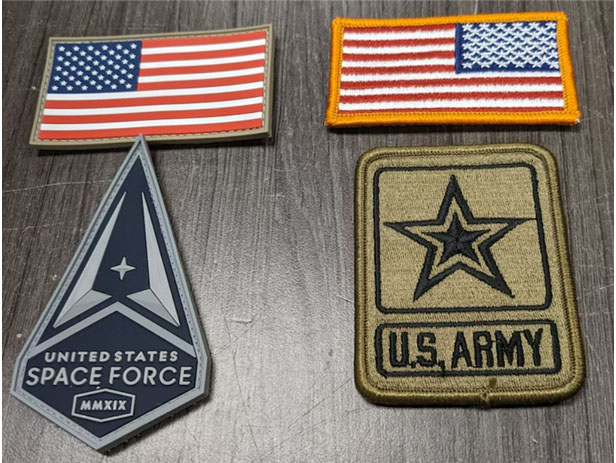January 17, 2023
4 Tips for Using PVC Patches – Just Like Space Force
The newest branch of the armed forces chose the flexible plastic material for insignia, in part because of the amount of intricate detail it allowed.
Insignia for Space Force, the space service branch of the U.S. armed forces, looks a little different than insignia used by the other uniformed branches. Rather than traditional embroidery, Space Force uniforms use PVC insignia.
The Institute of Heraldry at Fort Belvoir, VA, has been working with Space Force since 2019 to create seals, badges and other uniform insignia, and settled on polyvinyl chloride (PVC), in part because of how detailed Space Force’s approved insignia designs were, Tom Casciaro, chief of the institute’s technical and production division, told the Department of Defense news.

The Institute of Heraldry in Virginia has been working with Space Force to create PVC insignia, rather than the embroidered patches used by other military branches. (Photo courtesy of Department of Defense news)
Before switching to the material, the Institute had the PVC insignia tested for durability, freezing the patches, burning them and putting them through a machine that accelerates the fading process. “It passed everything, and it performed equally to the textile,” Casciaro said.
In addition to creating a more detailed, cleaner look, Casciaro told DOD news that using PVC allowed them to remove the gold border from Space Force’s flag patches and switch to a color that matches the uniform material so it blends in and only the flag stands out, which, he added, is “the way it should be.”
Embroidery, with its traditional appeal and high-value aesthetic, will always be a popular choice for custom patches, but newer materials like PVC are gaining ground among promotional products end-users. Here are four tips when considering PVC patches.
1. Make it last: PVC patches have a flexible, rubber-like feel, but are built to withstand the elements. They’re water-resistant and typically don’t fade, crack or peel. They’re ideal for heavy apparel, outerwear, hats, bags and hard goods like water bottles and tumblers, according to STAHLS’ (asi/88984).
2. Keep it simple: Many decoration suppliers offer PVC patches that come with a low-melt adhesive on the back for heat application or sewing. However, there are also versions that are pressure-sensitive meaning the patches can be pressed onto a surface without the need for special equipment.
3. Create a modern look: PVC has a more modern, unique look than traditional decoration styles. It has the dimensional quality of embroidery, but with an added sleekness that helps it stand out.
4. Get creative: Suppliers typically offer four- or five-color designs standard for PVC patches, though more colors are often available for a longer turnaround time. There’s also an opportunity to get creative with special effects. Top 40 supplier World Emblem (asi/98264), for example, offers an option for adding glow-in-the-dark ink to PVC patches.

Product Hub
Find the latest in quality products, must-know trends and fresh ideas for upcoming end-buyer campaigns.
